I was happy this morning to hear the local radio media reporting on this press release from the Delta Chamber of Commerce. Not because it is a “good news story”, but because it indicates Chambers of Commerce are starting to see the light about bigger transportation issues in our Cities.
This is a refreshing change from the old-skool Board of Trade argument that business just needs a wide road with many lanes and plenty’o’parking to succeed at business. In the coming decades, there will need to be ways for customers and employees to get to your door besides parking a car in front of it.
According to the report behind the presser, the people who actually operate within industrial areas and business parks are noticing that their staff is having a hard time getting to the auto-oriented developments being offered by our city planners. They are finding their lower-wage employees are demanding a sufficient pay rate to support running a car, which at about $7000 per year (according to CAA) is more than a third of the entire pre-tax income of a minimum-wage worker. There is also an increasing number of higher-skilled and higher-wage employees who are wanting better options than being shackled to a car for their daily transportation (a group within which I include myself, and a startling number of my professional colleagues and friends).
So the owners and operators of these business parks, like in the Tilbury district of Delta:
on Annacis Island:
the Richmond Port lands:
or Horseshoe Way:
…are trying to operate in areas where bus service is infrequent, does not fit shift hours, does not connect well to rapid transit, and is located a long way from residential areas. Even the infrequent bus service is limited in coverage, forcing transit-users to walk long distances on roads commonly built without sidewalks, and crowded with large trucks and poorly organized parking systems.
Just go to Google StreetView and wander around those neighbourhoods, it is a pedestrian disaster:
The Chambers above call out TransLink for not providing more comprehensive service to these areas, but that is only part of the problem. They should also be calling out on their local Municipal Councils, Transportation and Planning departments to design these “business parks” with accessibility in mind. There appears to be a legacy of bad planning here we are currently saddled with, but look at at this brochure for Surrey’s newest, most exciting business park opportunity: notice anything missing from the “features”? There is one bus that runs through this park, the 531, which provides 30-minute service from 6 in the morning to 9 at night. Marginal service at best, and if you are the guy sweeping the warehouse after the crews leave at 5:00, you are driving home at midnight. But you won’t see that in the flashy brochure. Is that TransLink’s fault, or Surreys?
Also, it isn’t just warehouses and industrial sites: the slab-walled business parks in places like the Knight Street area of Richmond have high office vacancy, not because they are not Class-A space, or because the rates are too high, but because the location between highway offramps in the ‘burbs (even the really-close-in ‘burbs) is just not where people setting up Class-A-desirous businesses prefer to be anymore. These entrepreneurs and corporations would rather be in Yaletown, on the Broadway Corridor, or even (dare I say) New Westminster – because there they can attract the best talent, and have happier employees, partly because the transit service is frequent, but more because you can walk outside at lunch and have a choice of eateries, or run errands at local businesses. Life is too busy these days to rely on a car. You can’t get anywhere in a car on your lunch hour.
It is worth noting, these things represent New Westminster’s competitive advantage. Even our worst-serviced areas, which happen to be the low-wage labour areas (the warehouses and big box retailers of Queensborough), they still see better, more frequent service and are more friendly pedestrian environments than most industrial-warehouse wastelands in Greater Vancouver. This is why the addition of 230,000 square feet of Class-A office space in Sapperton is good gamble for Wesgroup, and 130,000 square feet of Class-A is a good gamble for the City.
But that’s a topic for another Blog post.
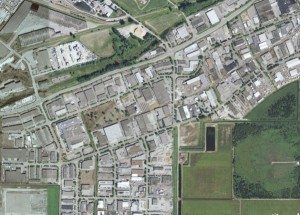
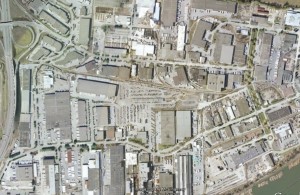
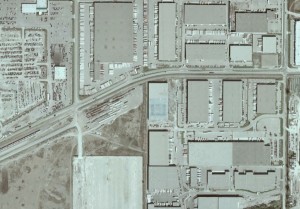
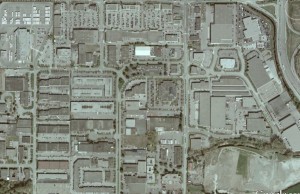
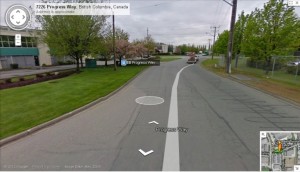
Several office parks in Richmond are offering free shuttle services to the Canada Line as a way of being “connected” to better transit (ironically the one I work at on No. 6 Rd has better bus service than most parts of downtown Vancouver, but most people do not perceive the bus service as a benefit). The office parks pay for this service. Its an attempt to counter the shift to downtown.
The reality is that suburban business parks just do not produce the density of demand that the rest of the city produces. It is much more cost effective to allocate transit services to where there is much higher all day ridership.
There are certainly still many ways to improve this though- perhaps better sidewalks- perhaps separated bike lanes and linking to transit friendly corridors along with parking facilities at both ends. I wouldn’t expect too much though- I think suburban business parks will always be car dependent. Perhaps we should just try not to build so many of these places and to relocate non-warehouse and distribution companies within the city